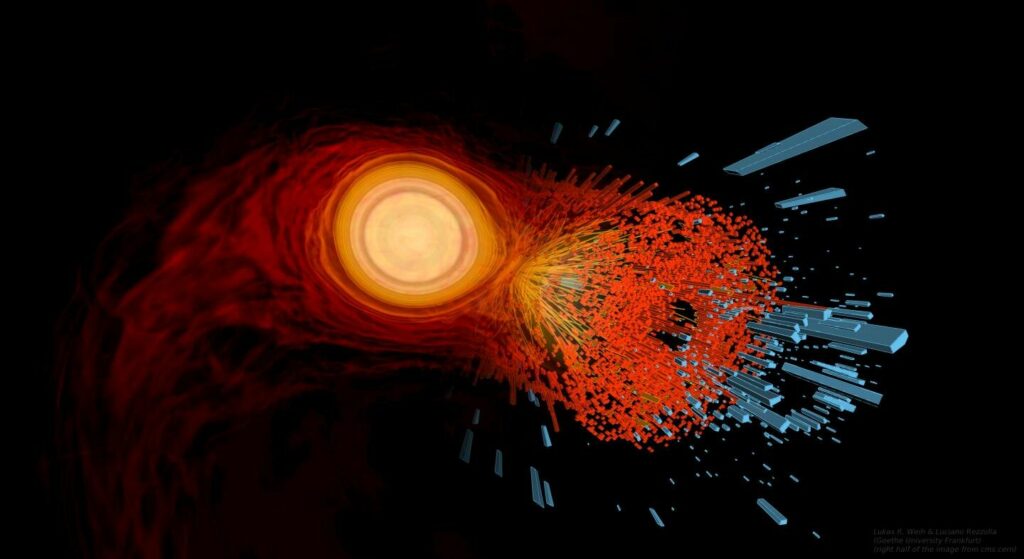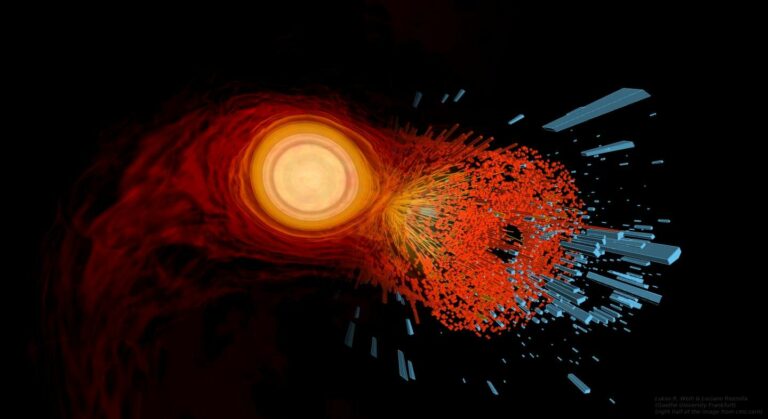The Existence of Quark-Gluon Plasma May Be Evidenced by Gravitational Waves
Neutron stars stand as some of the densest entities in the universe. If our Sun were to be a neutron star, condensing its mass into an almost perfect sphere with a radius of around 12 kilometers, it exemplifies the extreme density of these objects. When two neutron stars collide and form a hyper-massive neutron star, the core of the resulting object becomes intensely hot and dense.
Calculations indicate that under such conditions, hadrons like neutrons and protons, familiar particles in our daily experience, could break down into their constituent components of quarks and gluons, potentially forming a quark-gluon plasma. In 2017, it was groundbreaking to discover that merging neutron stars emit gravitational wave signals detectable on Earth. These signals not only provide insights into the nature of gravity but also offer a glimpse into matter’s behavior under extreme circumstances. However, the gravitational waves detected in 2017 did not extend beyond the point of merging.

The research by Frankfurt physicists delves into simulating the merging of neutron stars and the resultant product to investigate the conditions triggering a transition from hadrons to a quark-gluon plasma. Furthermore, they explore how such a transition would impact the corresponding gravitational wave. Their findings reveal that in a specific, later phase of the merged object’s life, a transition to the quark-gluon plasma occurs, leaving a distinct and recognizable signature on the gravitational wave signal.
Professor Luciano Rezzolla from Goethe University expresses confidence in the discovery, stating, “Compared to previous simulations, we have identified a new signature in the gravitational waves that is significantly clearer to detect. If this signature appears in the gravitational waves received from future neutron-star mergers, it would provide compelling evidence for the creation of quark-gluon plasma in the present universe.”
This article is republished from PhysORG under a Creative Commons license. Read the original article.
Do not forget to share your opinion with us to provide you with the best posts !




0 Comments